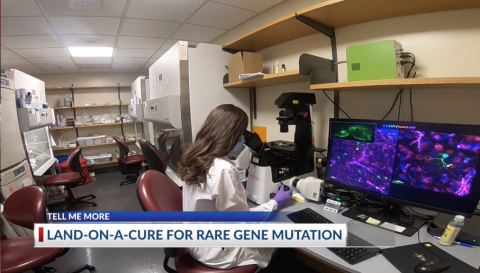Microtubule dynamics plays a crucial role in neuronal development and function. Variants in the tubulin cofactor D (TBCD) gene, which encodes one of the five co-chaperones required for assembly and disassembly of α/β-tubulin heterodimers, may lead to neurodevelopmental disorders. We aimed to study the clinical, electroencephalographic, and imaging features of a male patient with TBCD variants, and to provide a detailed review of the previously reported cases of TBCD-related neurological disorders. The patient presented with early-onset developmental regression, secondary microcephaly, epilepsy of infancy with migrating focal seizures, hypotonia, and brain atrophy with thin corpus callosum on brain magnetic resonance imaging. Genetic analyses of the family members revealed a compound heterozygous variant of c.230A > G (p.H77R) in the proband and deletion of exons 28 to 39 of TBCD, which has not been previously reported and was inherited from his carrier parents. Epilepsy of the patient was refractory to numerous antiepileptic drugs. The review of 33 previously reported patients revealed that the age at the onset was very early, and all the patients had presentations during the first year of life. This case report provides insight regarding the clinical features and genetic etiology of TBCD-related tubulinopathy. Identification of phenotypes and genotypes in patients may help in early diagnosis and appropriate genetic counseling.
Georg Thieme Verlag KG Stuttgart · New York.






